A colorful bird often seen in small groups flitting through the canopy of fruiting trees or seen flying, one after the other, across clearings and between trees.
Meet the Collared aracari
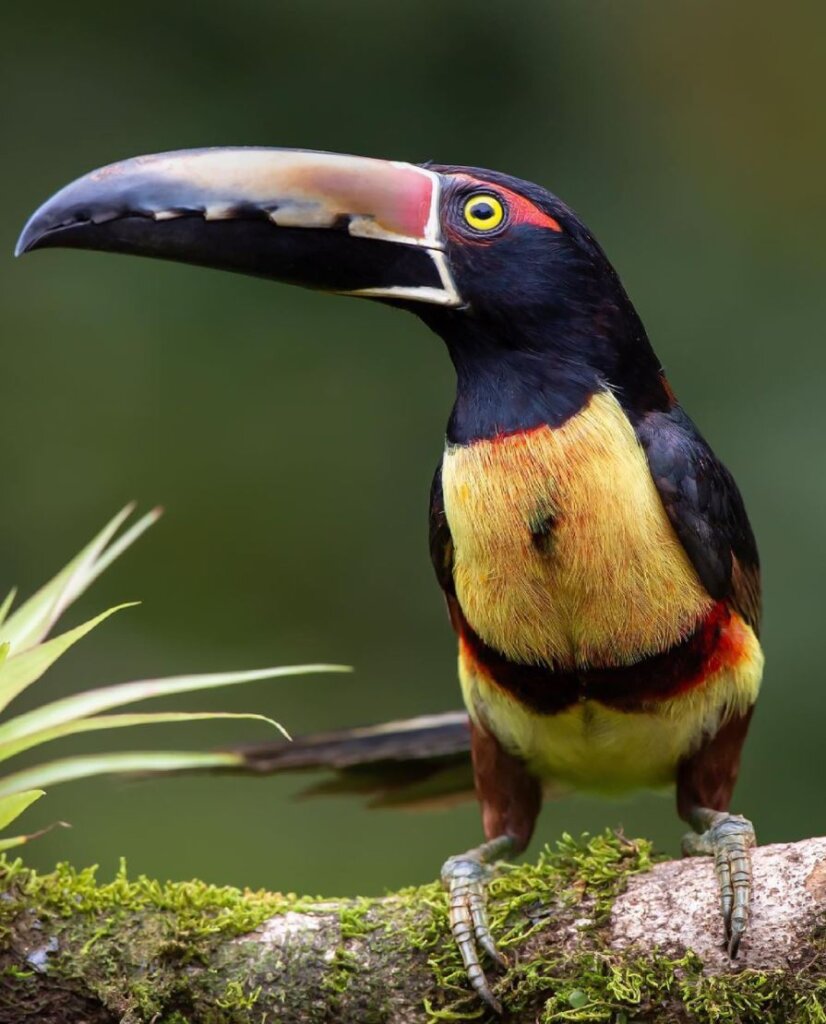
Photo Courtesy of Instagram/jeffreypatrickkarnes
The collared aracari or collared araçari (Pteroglossus torquatus), is a species of toucan, a near-passerine bird. A brightly colored toucan with a large bill both males and females look very much alike. 41 cm long the head and chest of this bird are black, while the upper parts are olive green apart from a birth red rump and upper tail. There is a reddish collar on the neck and a bright yellow belly with a round black spot in the center of the breast along with a red-tinted black band across the belly. Their thighs are chestnut. The bare facial skin around the eye is black, turning red. The upper beak is dull yellow, marked by a black saw-tooth pattern on the cutting edge. The lower beak is black, the legs green.
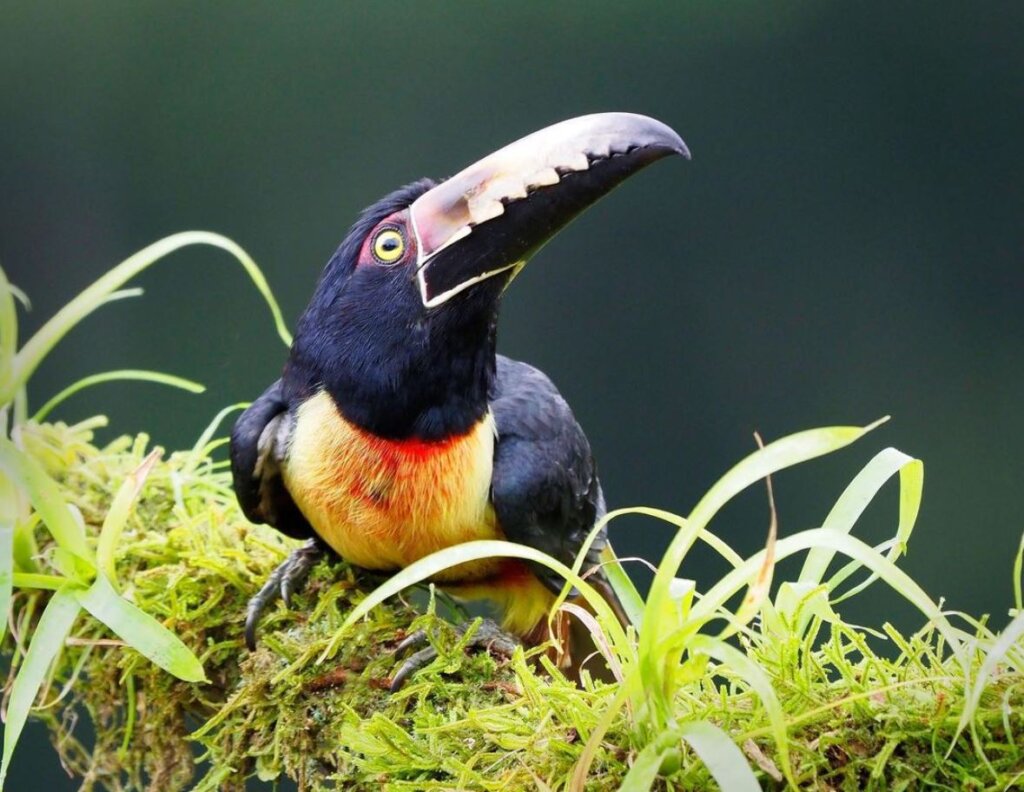
Photo Courtesy of Instagram/jvophotosafaris
Juvenile members of this species are duller, with a sooty-black head. Their upper parts are brownish-green.
Related Reading:
– A bird whose long silky tail and unique combination of pale blue and luminous yellow ensure he will never be confused with any other species!
The red rump and yellow underparts are paler, and the breast spot, belly, and bill pattern are not as bright.
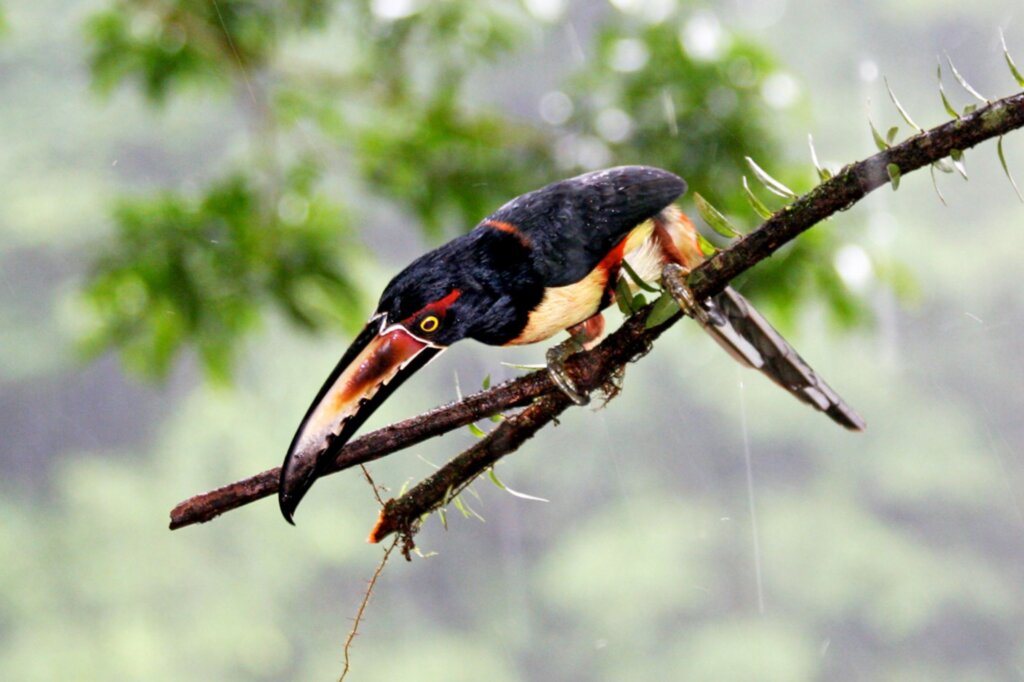
Photo Courtesy of Joseph C Boone / CC BY-SA 3.0
This species breeds from southern Mexico to Panama, as well as Ecuador, Colombia, Venezuela and Costa Rica.
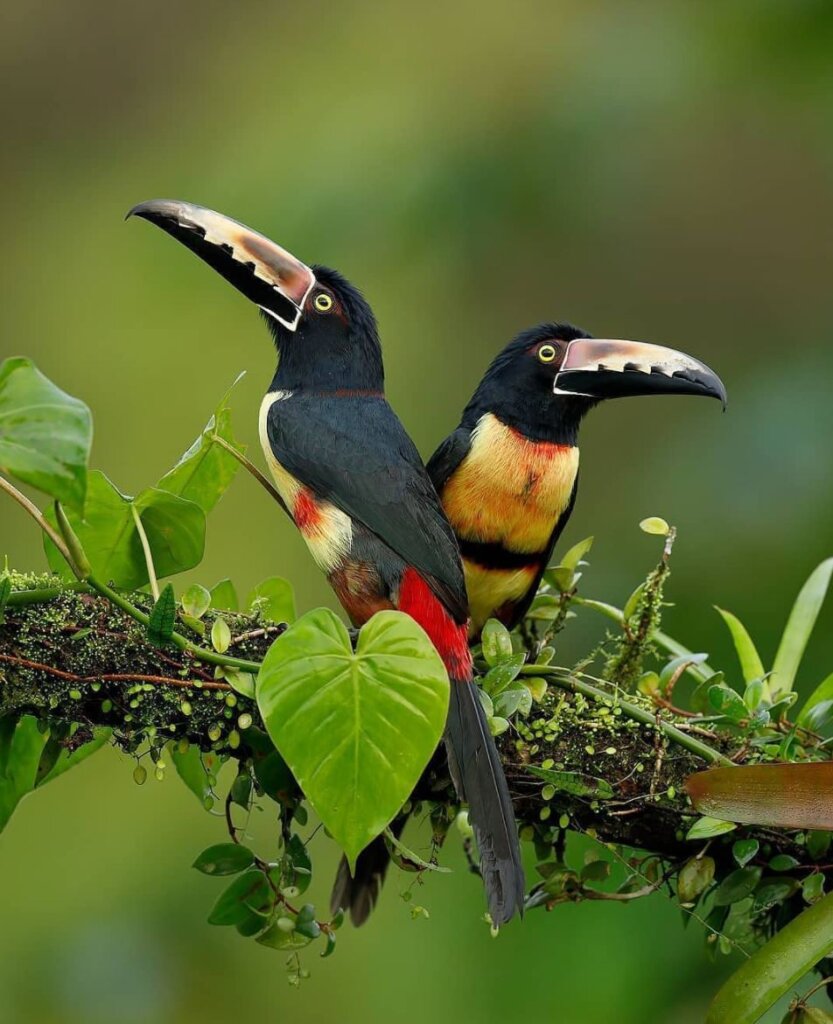
Photo Courtesy of Instagram/wildlife.adventure
Collared aracari prefers living in lowland forests and open woodland. They are mostly found on the mid and upper canopy of tropical rainforests, but also in swamp forests, second growths, plantations, and arable land. They are present from sea level up to an altitude of 1.500 m. Here they are primarily arboreal fruit-eaters, but they will also take insects, lizards, eggs, and other small prey.
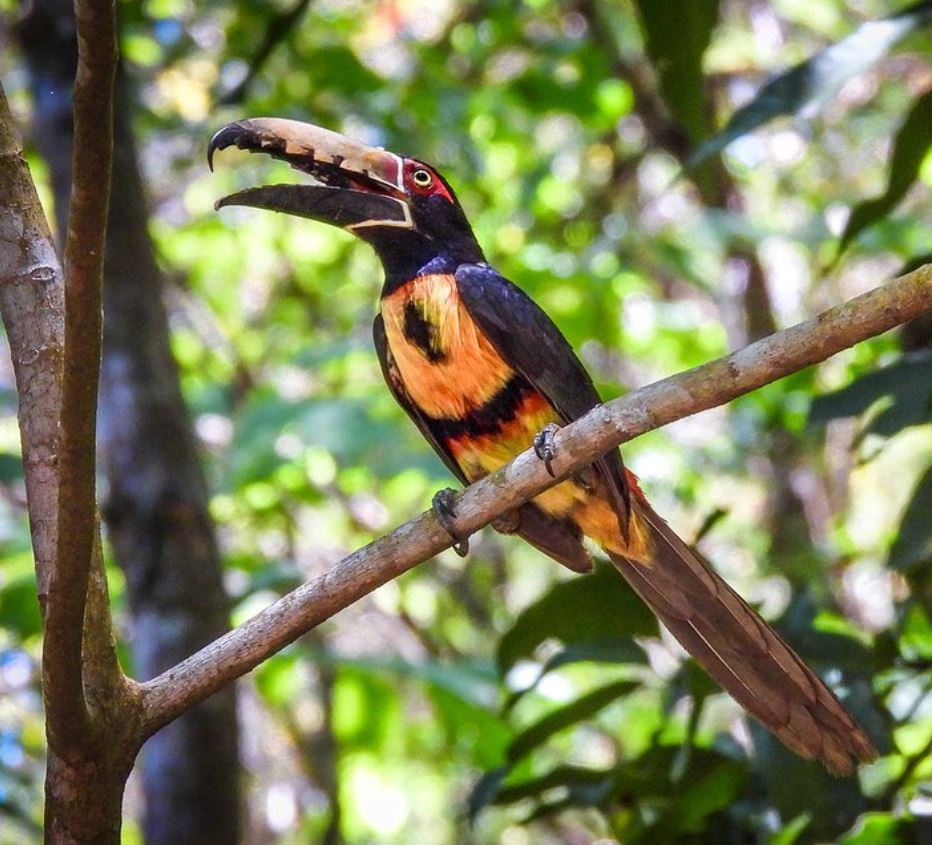
Photo Courtesy of Instagram/trish.sorensen89
During the breeding season, these birds appropriate hollows made by other birds, usually woodpeckers, or hollows created by broken branches or rot. A clutch of 3 white eggs is laid and then incubated by both the male and female for around 16 days. Both parents feed the newly hatched chicks, sometimes assisted by their previous offspring, becoming fully-fledged after 6 weeks.
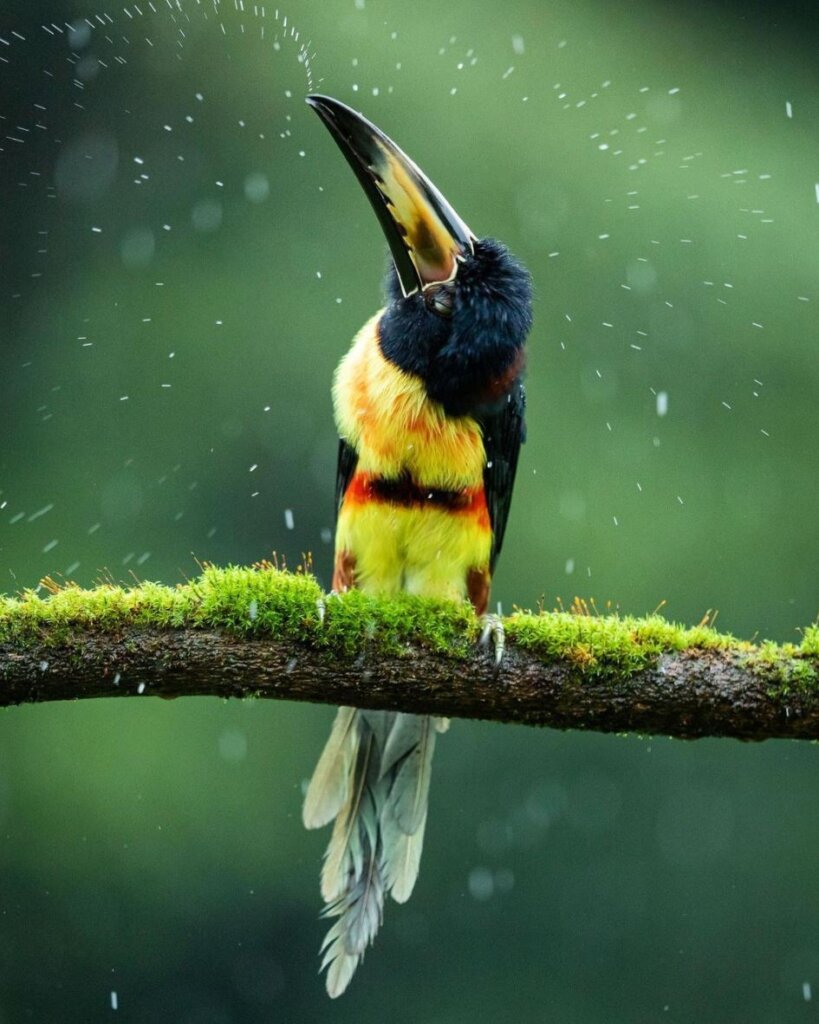
Photo Courtesy of Instagram/rainforest_photo_tours
Due to their large breeding range, these birds are currently placed as of Least Concern on the IUCN list. Despite this, the population is suspected to be in decline due to ongoing habitat destruction through deforestation.
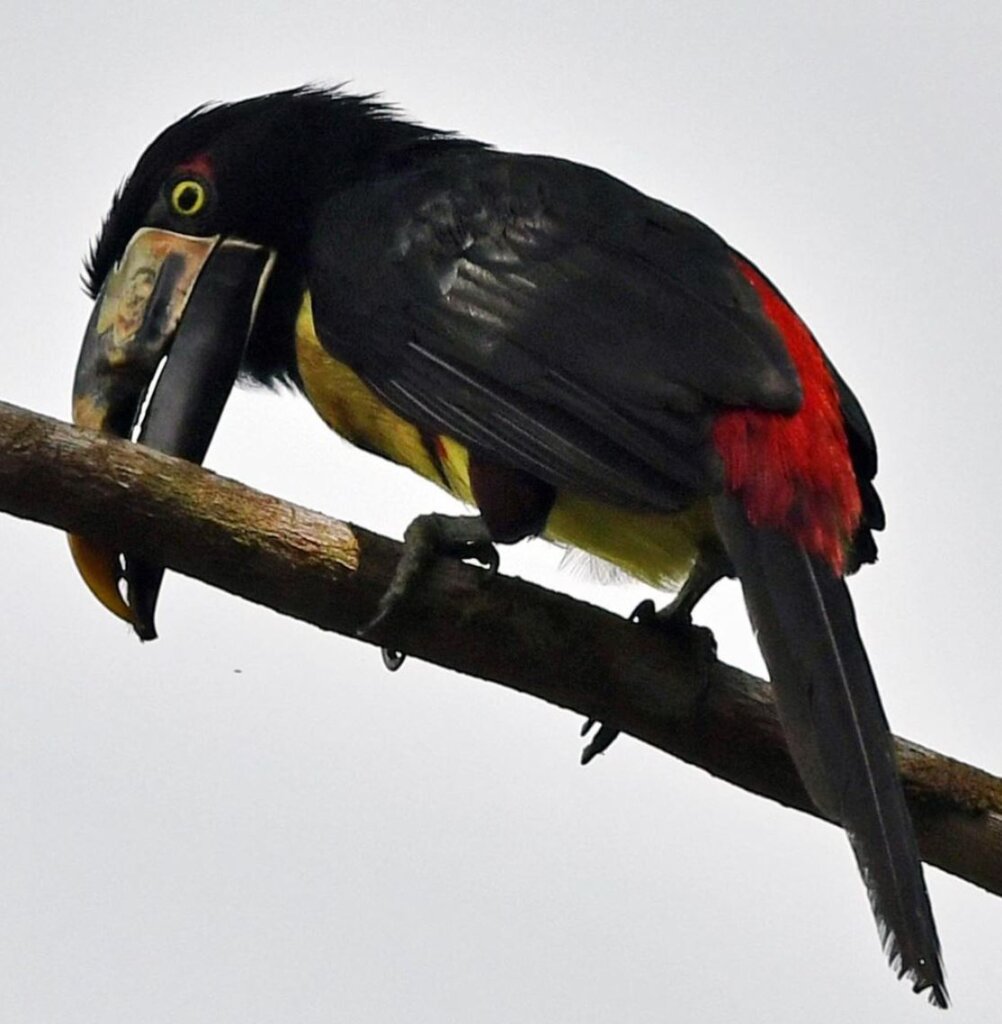
Photo Courtesy of Instagram/la.birdnerd